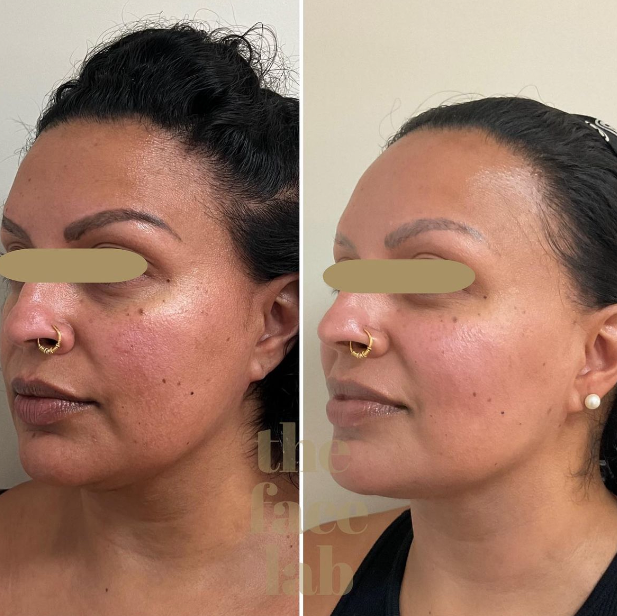Understanding Melasma: Melasma Awareness Month
July marks Melasma Awareness Month, a time dedicated to spreading awareness about this common skin condition and exploring effective treatments for hyperpigmentation. Melasma affects millions worldwide, manifesting as dark, irregular patches on the skin, predominantly on the face. Understanding melasma and the various treatments available can empower those affected to seek effective solutions and improve their skin health.
What is Melasma?
Melasma is a form of hyperpigmentation characterized by brown or gray-brown patches on the skin. It primarily affects areas exposed to the sun, such as the face, neck, and forearms. While it can affect anyone, it is more prevalent among women, particularly those with darker skin tones. Factors such as hormonal changes, sun exposure, and genetics play a significant role in the development of melasma.
Causes of Melasma
1. Hormonal Changes: Pregnancy, birth control pills, and hormone replacement therapy can trigger melasma due to fluctuations in estrogen and progesterone levels.
2. Sun Exposure: Ultraviolet (UV) rays from the sun stimulate melanocytes, the pigment-producing cells in the skin, leading to hyperpigmentation.
3. Genetics: A family history of melasma increases the likelihood of developing the condition.
4. Skin Care Products:
Certain skin care products that irritate the skin can exacerbate melasma.
5. Heat:
Warm temperatures such as exposures to ovens, saunas, steam room and hotter weather is thought to trigger melasma due to dilation of blood vessels that feed melanocytes
Recognizing Melasma
Melasma typically appears as symmetrical patches on the cheeks, forehead, bridge of the nose, and chin. While these patches are not harmful, they can significantly impact an individual's self-esteem and confidence. Diagnosing melasma usually involves a visual examination by a dermatologist, and in some cases, a Wood’s lamp examination to view the extent of pigmentation.
Treatments for Melasma
While melasma can be challenging to treat, various effective treatments can help reduce its appearance. Here are some of the most recommended treatments:
1. Topical Treatments:
- Hydroquinone: A skin-lightening agent that inhibits melanin production. Available over-the-counter or in prescription-strength formulations.
- Tretinoin and Corticosteroids: Often used in combination with hydroquinone to enhance skin lightening.
- Azelaic Acid, Kojic Acid, Arbutin, OTC Transexemic Acid: Alternative lightening agents for those sensitive to hydroquinone.
- Cysteamine: A new alternative topical agent for brightening and suppressing melanin production. This topical is considered an alternative to hydroquinone.
2. Chemical Peels:
- Glycolic Acid, Lactic Acid, Mandelic Acid: Help to exfoliate the skin and promote the growth of new, evenly pigmented skin cells.
3. Laser and Light Therapies:
- Nd:YAG Laser: Targets pigment without damaging surrounding tissue, promoting the regeneration of healthy skin.
- Red Light Therapy: Emerging evidence it may help to target pigment and improve skin tone.
4. Skin Resurfacing:
- Thermomechanical Action (TMA) Skin Resurfacing: Stimulates collagen production and enhances the penetration of topical treatments by 40%, improving overall skin texture and tone.
5. Oral Medications:
- Tranexamic Acid: An oral medication that has shown promise in reducing melasma by inhibiting the pathways that lead to pigment production.
Preventing Melasma
Prevention is crucial in managing melasma. Here are some tips to minimize the risk of developing or worsening melasma:
- Sun Protection: Use a broad-spectrum sunscreen with at least SPF 30 daily, wear wide-brimmed hats, and seek shade whenever possible.
- Gentle Skincare: Avoid skin care products that irritate the skin and use gentle cleansers and moisturizers.
- Regular Dermatologist Visits: Regular check-ups with a dermatologist can help monitor the condition and adjust treatment plans as needed.
Living with Melasma
Living with melasma can be challenging, but support and resources are available. Joining support groups and engaging in online communities can provide a sense of solidarity and shared experiences. Additionally, consulting with a skin specialist, primary care provider, and/or dermatologist can lead to personalized treatment plans that address individual concerns and skin types.
How does The Face Lab Address Melasma?
At The Face Lab we offer medical-grade skincare and have a variety of sunscreens that can help with managing melasma. Our
Tixel Skin Resurfacing treatment in combination with strong topical serums,
Aerolase Melasma treatments, and
Advanced Facials featuring our Brightening Facial & Peel.
For those looking for quicker results, we specialize in “stacked skin treatments” in which we combine various treatments in one. Our
Bright Face (combination Aerolase and Advanced Facial) and Skin Reset (combination Aerolase and Tixel).
For the brave souls who are willing to endure downtime and peeling, we now offer the Cosmelan Peel which is a world-renowned de-pigmenting peel. Our
De-Pigmentation Program for those who need guidance skin prep using laser, peels, and facials to help optimize results of their Cosmelan Peel.
Melasma Awareness Month is an opportunity to shed light on this common yet often misunderstood condition. By understanding the causes, recognizing the symptoms, and exploring various treatment options, individuals can take proactive steps towards managing melasma and achieving healthier, more even-toned skin. With advancements in skin treatments and a commitment to sun protection, the journey towards clearer skin is within reach.






Quick Links
Contact Info
By Appointment Only
Follow Us
Work With Us




